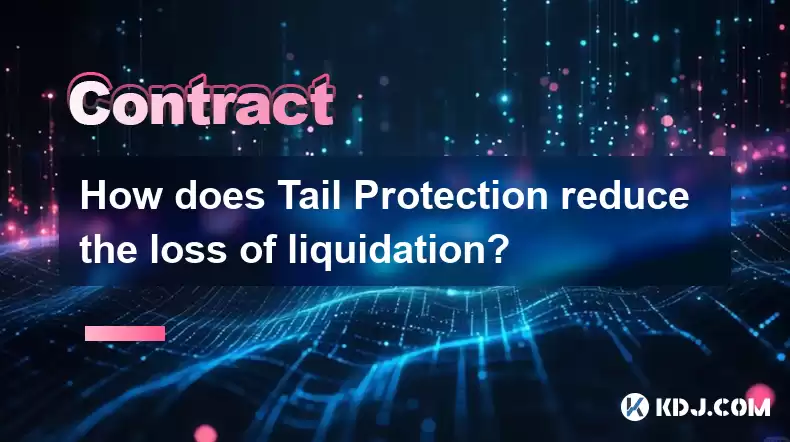-
 Bitcoin
Bitcoin $116700
0.24% -
 Ethereum
Ethereum $3973
4.34% -
 XRP
XRP $3.283
7.68% -
 Tether USDt
Tether USDt $1.000
0.01% -
 BNB
BNB $789.8
2.27% -
 Solana
Solana $176.2
3.31% -
 USDC
USDC $0.9999
0.00% -
 Dogecoin
Dogecoin $0.2238
5.14% -
 TRON
TRON $0.3389
-0.51% -
 Cardano
Cardano $0.7907
4.03% -
 Stellar
Stellar $0.4527
10.02% -
 Hyperliquid
Hyperliquid $41.07
4.27% -
 Sui
Sui $3.794
1.77% -
 Chainlink
Chainlink $19.49
10.40% -
 Bitcoin Cash
Bitcoin Cash $580.9
0.74% -
 Hedera
Hedera $0.2617
4.32% -
 Avalanche
Avalanche $23.41
3.67% -
 Ethena USDe
Ethena USDe $1.001
-0.03% -
 Litecoin
Litecoin $122.4
1.38% -
 Toncoin
Toncoin $3.364
1.49% -
 UNUS SED LEO
UNUS SED LEO $8.988
0.37% -
 Shiba Inu
Shiba Inu $0.00001295
2.82% -
 Uniswap
Uniswap $10.62
5.75% -
 Polkadot
Polkadot $3.922
4.46% -
 Dai
Dai $1.000
0.01% -
 Bitget Token
Bitget Token $4.494
2.15% -
 Monero
Monero $268.0
-1.30% -
 Cronos
Cronos $0.1523
3.68% -
 Pepe
Pepe $0.00001127
4.43% -
 Aave
Aave $285.4
4.85%
How does Tail Protection reduce the loss of liquidation?
Tail Protection in crypto trading adjusts liquidation prices to provide a buffer, reducing the risk of sudden losses in volatile markets.
Apr 11, 2025 at 01:50 am

Introduction to Tail Protection in Cryptocurrency
Tail Protection is a mechanism designed to mitigate the risks associated with liquidation in cryptocurrency trading. Liquidation occurs when a trader's position is forcibly closed by the exchange due to insufficient margin to cover potential losses. This often happens in leveraged trading, where traders borrow funds to amplify their investment potential. However, this also increases the risk of significant losses if the market moves against the trader's position. Tail Protection aims to reduce these losses by providing a buffer or additional protection during volatile market conditions.
Understanding Liquidation in Crypto Markets
Liquidation in the crypto market is a critical risk that traders face, especially when using leverage. When a trader's position moves into a loss, the exchange requires them to maintain a certain level of margin. If the market moves adversely and the trader's account balance falls below the required margin, the exchange will liquidate the position to prevent further losses. This can result in significant financial loss for the trader. Tail Protection works to prevent such drastic outcomes by offering additional safeguards.
How Tail Protection Works
Tail Protection functions by adjusting the liquidation price of a trader's position to be more favorable. Instead of liquidating the position at the exact point where the margin requirement is breached, Tail Protection allows for a small buffer. This buffer gives the market a chance to recover, potentially saving the trader from liquidation. The mechanism is particularly useful in highly volatile markets where prices can swing dramatically in a short period.
The Mechanics of Tail Protection
To understand how Tail Protection reduces the loss of liquidation, it's essential to delve into its mechanics. When a trader opens a leveraged position, the exchange calculates the initial margin requirement and the liquidation price. With Tail Protection, the liquidation price is adjusted to be slightly lower for long positions and higher for short positions. This adjustment creates a 'tail' that extends the point of liquidation, giving the trader more room before their position is closed.
Benefits of Tail Protection for Traders
Tail Protection offers several benefits to traders. Firstly, it reduces the risk of sudden and unexpected liquidations, which can be particularly devastating in volatile markets. Secondly, it provides traders with more time to manage their positions and potentially add more margin if needed. This can be crucial in preventing a cascade of liquidations that can exacerbate market downturns. Lastly, it can increase trader confidence, knowing that there is an additional layer of protection against extreme market movements.
Implementing Tail Protection in Trading Platforms
To implement Tail Protection in trading platforms, exchanges need to integrate this feature into their risk management systems. Here's how traders can benefit from this feature:
- Check for Availability: First, traders should check if their chosen trading platform offers Tail Protection. Not all exchanges provide this feature, so it's crucial to select a platform that does.
- Understand the Terms: Traders need to understand the specific terms of the Tail Protection offered by the platform. This includes knowing the exact buffer provided and any associated fees.
- Adjust Trading Strategy: With Tail Protection in place, traders can adjust their trading strategies to take advantage of the additional safety net. This might involve taking slightly larger positions or using higher leverage, knowing that the risk of liquidation is reduced.
- Monitor Positions Closely: Even with Tail Protection, it's essential for traders to monitor their positions closely. The buffer provided is not a guarantee against all losses, and traders should be prepared to add more margin if necessary.
Real-World Examples of Tail Protection
To illustrate how Tail Protection works in practice, consider a scenario where a trader opens a long position on Bitcoin with 10x leverage. Without Tail Protection, if the price of Bitcoin drops by 10%, the position would be liquidated. However, with Tail Protection, the liquidation price might be set at a 12% drop, giving the market a chance to recover. If the price rebounds before reaching the adjusted liquidation price, the trader's position remains open, potentially saving them from a significant loss.
Tail Protection and Market Stability
Tail Protection not only benefits individual traders but can also contribute to overall market stability. By reducing the frequency of liquidations, it can help prevent the kind of cascading liquidations that can lead to sharp market downturns. This is particularly important in the cryptocurrency market, where high volatility can lead to rapid and severe price movements.
Frequently Asked Questions
Q: Can Tail Protection be used with all types of leveraged positions?
A: Tail Protection is typically available for both long and short leveraged positions. However, the specific implementation and availability can vary between trading platforms. Traders should check with their chosen exchange to confirm if Tail Protection is available for their desired trading strategy.
Q: Does Tail Protection come with additional costs?
A: Some trading platforms may charge a fee for using Tail Protection, while others may offer it as a standard feature. Traders should review the fee structure of their chosen platform to understand any potential costs associated with this feature.
Q: How does Tail Protection affect the overall risk of trading?
A: Tail Protection reduces the immediate risk of liquidation but does not eliminate all risks associated with leveraged trading. Traders should still use prudent risk management strategies, such as setting stop-loss orders and not over-leveraging, to manage their overall risk exposure.
Q: Can Tail Protection be adjusted by the trader?
A: Typically, the parameters of Tail Protection are set by the trading platform and cannot be adjusted by individual traders. However, traders can choose whether to use this feature when opening a position, depending on the platform's offerings.
Disclaimer:info@kdj.com
The information provided is not trading advice. kdj.com does not assume any responsibility for any investments made based on the information provided in this article. Cryptocurrencies are highly volatile and it is highly recommended that you invest with caution after thorough research!
If you believe that the content used on this website infringes your copyright, please contact us immediately (info@kdj.com) and we will delete it promptly.
- Roman Storm, Funding Effort, and the Looming Defense Retrial: A New York Minute on the Tornado Cash Case
- 2025-08-09 02:50:14
- Crypto's Wild Ride: XRP, Dogecoin, and the Altcoin Surge You Can't Ignore
- 2025-08-09 02:50:14
- Elon Musk, Bitcoin, and the Enduring Power of Approval: A Crypto Love Story?
- 2025-08-09 03:50:15
- Ruvi AI: The Next Big Thing After Ripple on CoinMarketCap?
- 2025-08-09 03:50:15
- Floki Price Surges: Elliott Wave and Fibonacci Setups Point to Potential Gains!
- 2025-08-09 02:30:16
- Pepe Price, RTX (Remittix?) & the $10K ETH Dream: NYC Crypto Chatter
- 2025-08-09 02:30:16
Related knowledge

What is the difference between realized and unrealized PNL on KuCoin?
Aug 09,2025 at 01:49am
Understanding Realized and Unrealized PNL on KuCoinWhen trading on KuCoin, especially in futures and perpetual contracts, understanding the distinctio...

How does KuCoin Futures compare against Binance Futures in terms of features?
Aug 09,2025 at 03:22am
Trading Interface and User ExperienceThe trading interface is a critical component when comparing KuCoin Futures and Binance Futures, as it directly i...

What is the distinction between mark price and last price on KuCoin?
Aug 08,2025 at 01:58pm
Understanding the Basics of Price in Cryptocurrency TradingIn cryptocurrency exchanges like KuCoin, two key price indicators frequently appear on trad...

What are the specific maker and taker fees on KuCoin Futures?
Aug 08,2025 at 08:28am
Understanding Maker and Taker Fees on KuCoin FuturesWhen trading on KuCoin Futures, users encounter two primary types of fees: maker fees and taker fe...

Can you explain the difference between cross margin and isolated margin on KuCoin?
Aug 09,2025 at 02:57am
Understanding Margin Trading on KuCoinMargin trading on KuCoin allows traders to borrow funds to increase their trading position beyond their actual c...

How can I open a long position on KuCoin Futures?
Aug 09,2025 at 02:07am
Understanding KuCoin Futures and Long PositionsOpening a long position on KuCoin Futures means you are speculating that the price of a cryptocurrency ...

What is the difference between realized and unrealized PNL on KuCoin?
Aug 09,2025 at 01:49am
Understanding Realized and Unrealized PNL on KuCoinWhen trading on KuCoin, especially in futures and perpetual contracts, understanding the distinctio...

How does KuCoin Futures compare against Binance Futures in terms of features?
Aug 09,2025 at 03:22am
Trading Interface and User ExperienceThe trading interface is a critical component when comparing KuCoin Futures and Binance Futures, as it directly i...

What is the distinction between mark price and last price on KuCoin?
Aug 08,2025 at 01:58pm
Understanding the Basics of Price in Cryptocurrency TradingIn cryptocurrency exchanges like KuCoin, two key price indicators frequently appear on trad...

What are the specific maker and taker fees on KuCoin Futures?
Aug 08,2025 at 08:28am
Understanding Maker and Taker Fees on KuCoin FuturesWhen trading on KuCoin Futures, users encounter two primary types of fees: maker fees and taker fe...

Can you explain the difference between cross margin and isolated margin on KuCoin?
Aug 09,2025 at 02:57am
Understanding Margin Trading on KuCoinMargin trading on KuCoin allows traders to borrow funds to increase their trading position beyond their actual c...

How can I open a long position on KuCoin Futures?
Aug 09,2025 at 02:07am
Understanding KuCoin Futures and Long PositionsOpening a long position on KuCoin Futures means you are speculating that the price of a cryptocurrency ...
See all articles

























































































